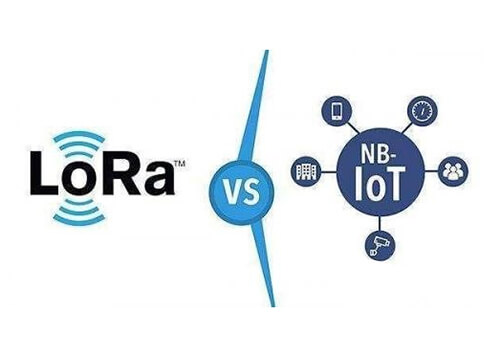After the read, you will learn about:
- What is LoRa?
- What is NB-IoT?
- Lora VS NB-IoT technology
- Which one is more competitive between Lora and NB-IoT

What is LoRa in Lora VS NB-IoT?
Lora is a low-power local area network wireless standard created by Semtech. Low-power consumption is generally difficult to cover long distances. Long-distance power consumption is generally high. It seems difficult for horses to run far without eating grass.
The name of LoRa is Long Range Radio. Its biggest feature is that it can travel farther than other wireless methods under the same power consumption. It achieves the unity of low power consumption and long-distance. The power consumption is 3-5 times longer than that of traditional radio frequency communication.
What is NB-IoT in Lora VS NB-IoT?
Narrow Band Internet of Things (NB-IoT) has become an important branch of the Internet of Everything. NB-IoT is built on a cellular network and only consumes about 180kHz of bandwidth.
It can be directly deployed on a GSM network, UMTS network, or LTE network to reduce deployment costs and achieve smooth upgrades.
NB-IoT is an emerging technology in the IoT field, which supports the cellular data connection of low-power devices in the wide-area network. It is also called a low-power wide-area network (LPWAN).
NB-IoT supports efficient connection of devices with long standby time and high network connection requirements. It is said that the battery life of NB-IoT devices can be increased by at least 10 years, while also providing very comprehensive indoor cellular data connection coverage.
Lora VS NB-IoT Technology
Lora VS NB-IoT, Lora and NB-IoT are both IoT technologies, but there are obvious differences between the two.
First, the Lora VS NB-IoT, two operating frequency bands are different
NB-IoT operates in an authorized frequency band. The so-called authorized frequency band is officially authorized and authorized for use. Ordinary people cannot send signals within the frequency range mentioned in this frequency band.
The three major domestic operators: China Telecom, China Mobile, and China Unicom have all set foot in NB-IoT, and Huawei also participates in vigorous promotion in China.
Lora works in unlicensed frequency bands, and the main promoters are unofficial Internet companies. For example:
Alibaba Cloud claims to connect 10 billion devices in the next five years, while Tencent is focusing on investments in LoRaWANTM technology and applications.
Alibaba Cloud also proposed the integration requirements for the network management platform of the Internet of Things platform products, so that different companies can adapt to the platform requirements to produce products with matching specifications.
Second, the operator can master the data channel of NB-IoT and charge, while LoRa is an independent network construction of the enterprise, and there is no need to pay the operator
NB-IoT can be modified on the basis of the communication base station itself, and the network can be built with not too much workload. Then the operator can master this data channel to charge.
But LoRa is different. Users can complete LoRa network deployment without relying on operators, which not only deploys faster but also costs less. In closed areas such as residential communities, farms, and industrial parks, especially indoor and underground environments with weak NB-IoT signals, LoRa technology has obvious advantages.
In other words, long-distance communication was originally the privilege of traditional telecom operators, but now because of the existence of LoRa, if private companies want to get involved in long-distance communication, then private companies can choose another option, which is to select in unlicensed frequency bands.
Third, LoRa provides users with greater autonomy
From a technical perspective, LoRa is a physical layer modulation technology that can be used in different protocols, such as LoRaWAN protocol, CLAA network protocol, LoRa private network protocol, and LoRa data transparent transmission.
With different usage agreements, the final product and business form will also be different. Owners (enterprises) can independently control network quality and quickly optimize and supplement network coverage; they can also operate independently, take operating data into their own hands, and expand the network according to business needs with relative freedom.
Fourth, Lora VS NB-IoT, different energy consumption
Take the basic working mode Class A of the device corresponding to LoRa as an example to compare with NB-IoT.
If the battery power used by the sensor is 1000mAH, and the packet is sent every 1 hour, then even if the packet is sent at the lowest rate SF12 (LoRa is the lower the rate, the more power is consumed), the battery is theoretically enough to maintain the device for 10 years.
However, if it is NB-IoT, which is also the Internet of Things in the operator’s network, it can be used for more than a year under the same conditions. The advantage of LoRa in energy consumption is evident.
Therefore, in some occasions that are more sensitive to power consumption parameters, such as arranging multiple sensors in a large area, it is often hoped that under this arrangement, it is best that the battery can be used for several years without replacing or charging, so as to save better cost.
In this case, LoRa’s Class A is extremely competitive.
Besides the Lora VS NB-IoT article, you may also be interested in the below articles.
What is the difference between WIFI and WLAN?
Summary of 41 Basic Knowledge of LTE
What Is The 5G Network Slicing?

2 Responses